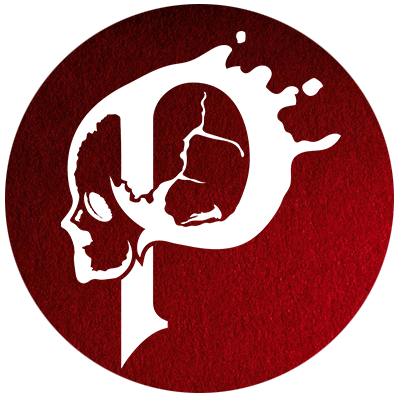One of the challenges we faced when creating the combat system for The Pact was achieving game mechanics that were smooth and cinematic but still allowed for character development and crunchiness.
Life, Combat and Death
Download the complete rulebook HERE.
The online CODEX is under construction, we recommend downloading the complete rulebook.
Life and Health Points
The universe of The Pact is a dangerous one and characters are constantly fighting for their survival. All characters start with 3 Health Points (HP) at their creation. Certain skills can increase this number.
Health Points are generalized and are added to Armour Points (AP).
Health Points regenerate naturally at the rate of 1 per 2 hours, or 1 per 30 minutes of Short Rest.
Short Rest
A Short Rest is a period of a minimum of 30 consecutive minutes during which the player cannot take any offensive actions. They can, however, talk, eat, cook, play games, train, etc.
During a Short Rest, characters normally recover 1 Health Point, all their Armour Points if they remove their armour (light armours are exempt) and all their Mana points. They can also recharge their abilities that offer this option by paying the associated cost (if applicable).
Certain skills can only be used during Short Rest.
Armour Points
Armour Points are generalized and are added to the character's Health Points. Damage received first reduces Armour Points, then Health Points, unless otherwise stated.
A character regains all their AP and the use of a broken shield during a Short Rest. Some abilities also grant temporary Armour Points that increase the character's total Armour Points. Temporary Armour Points are always the first Armour Points lost when a character takes damage, and they cannot be repaired.
Armours are divided into 3 categories based on their materials: light, medium, and heavy.
| Category | Material | Base Armour Points | Partial Armour Points | Full Armour Points |
|---|---|---|---|---|
| Light | Bones, leather, gambeson | 1 | 2 | 3 |
| Medium | Chain mail, lamellar, brigandine | 1 | 3 | 4 |
| Heavy | Plate | 1 | 4 | 5 |
Armour that totals at least 2 points of coverage grants 1 Base AP, regardless of its category. A partial armour (which totals at least 4 points of coverage) grants Partial AP according to the table below. A full armour (which totals 7 points of coverage) grants Full AP instead.
| Body Part | Coverage |
|---|---|
| Arms | 1 |
| Back | 1 |
| Chest | 1 |
| Head | 1 |
| Hips and thighs | 1 |
| Legs | 1 |
| Shoulders | 1 |
The category of a mixed armour, that is armour composed of materials from 2 or more categories, is determined based on the proportion of coverage from each category. A partial (Partial AP) mixed armour adopts the category representing at least 3 out of 4 points of coverage. A full (Full AP) mixed armour adopts the category representing at least 5 out of 7 points of coverage. If no category reaches these coverage thresholds, you may consider heavy armour coverage points as medium, and medium armour coverage points as light.
Armour made of modern materials (plastic, latex, EVA foam, butcher's chainmail, etc.) is always considered a lighter category (minimum light).
Asymmetrical armours, such as gladiator armours covering only one shoulder out of two, provide the same points of coverage as their traditional equivalents.
Combat
Hits generally inflict 1 point of damage. In that case, they do not need to be called. If a hit inflicts more than 1 point of damage or an effect, it must be called.
A hit can either inflict damage or an effect. It is never possible to call more than one effect per hit.
Some skills state that a hit will deal 2 points of damage, while others indicate that they do +1 or +2 points of damage. Pay attention, there is a difference, since only the 2nd case increases the damage of an attack. Using 2 skills that inflict 2 points of damage simultaneously is unnecessary because they do not stack. It is, however, possible to receive an enhancement effect that increases your damage. Always check your keywords.
Agony
When a character’s health is reduced to 0 HP, they enter a state of agony. The character immediately loses the use of an arm or a leg of their choice. If the character is stabilized before the end of the agony period, they regain the use of their limb.
While in agony, players can only walk, talk and drink a potion. They cannot run, use any skills, attack or defend themselves.
If they are not healed within 10 minutes or if they receive further damage while in agony, they fall unconscious and enter a bleed-out period.
When a character is not stabilized while in agony, they become unconscious and enter a bleed-out period. The limb that was injured during agony remains so. This is a Minor Injury that will need to be treated.
The bleed-out period lasts 5 minutes, during which the player cannot talk or move. If no one rescues them during the bleed-out period, the Minor Injury worsens and becomes a Major Injury (there is no longer a Minor Injury). The player must then obtain a Major Injury card that details the next steps at one of the designated out-of-game interaction locations.
They can then resume the game in a safe location with 1 HP and their Major Injury. They also have no memory of the circumstances surrounding their unconsciousness and injury.
Unconsciousness and Bleed-Out
Death
Although rare, character death is possible in The Pact universe. For instance, if a character suffers 2 Permanent Afflictions, they die. A scripted event could also cause their death. If there is a known danger of such a situation occurring, the player will be informed.
